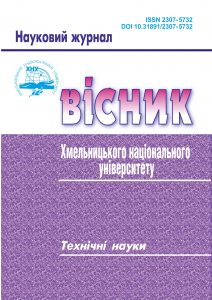IMPROVEMENT OF TECHNOLOGY OF MANUFACTURING OF ELECTRIC DIRECT CURRENT MACHINES WITH WINDING-FREE ROTOR
DOI:
https://doi.org/10.31891/2307-5732-2023-327-5-143-146Keywords:
manufacturing technology, DC machine, armature winding sections, reliabilityAbstract
A direct current electric machine with a winding-free rotor (DCWFR) is significantly different from a classic direct current machine, its magnetic system does not have a common yoke and consists of a series of magnetically uncoupled teeth and grooves, open on both sides. Sections of the armature winding are laid with a partial shift by the value of the pole distribution τ. This ensures the unidirectionality of the resulting magnetic flux penetrating the section of the armature winding, and the preservation of the electromagnetic moment of the given sign.
The presence of grooves in which there is no bottom creates a number of air gaps, which leads to a decrease in the magnetic conductivity of the magnetic conductor in the transverse direction, and this, in turn, leads to a weakening of the reaction field of the Фa armature and the rejection of additional poles and compensation winding. Therefore, the size of the working air gap can be reduced to the minimum possible value from a technological point of view.
The design of the DCWFR allows: to sharply weaken the transverse reaction of the armature and to bring the current overload capacity KI up to 5÷7; significantly (up to 30%) reduce the cost of winding copper due to the absence of additional poles and compensating winding; to significantly improve heat removal conditions; improve energy performance. The mass of the DCWFR rotor is 3÷5 times less than that of a classic engine, and the moment of inertia will decrease proportionally.
The manufacturing technology of such electric machines is significantly different from the manufacturing technology of classical direct current machines. The main technological complexity in such an electric machine is caused by the installation process of the armature winding sections. To solve this problem, it is proposed to change the assembly order of the DCWFR stator: first the windings, then the magnetic system.
The windings are assembled on a special template and compounded. After they become monolithic, the template is released, and the teeth of the magnetic system are inserted in its place. This approach makes it possible to fully automate the assembly process of DCWFR, reduce the manufacturing time of such an electric machine and significantly increase its reliability.

